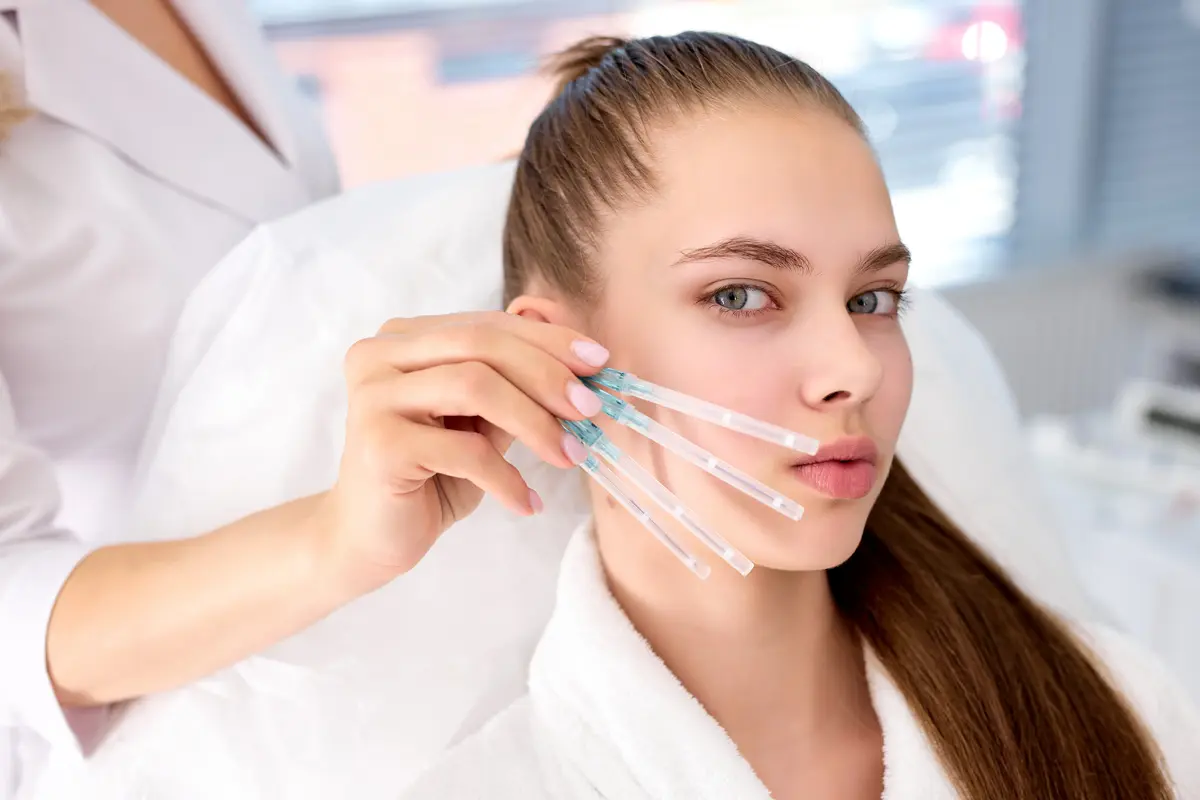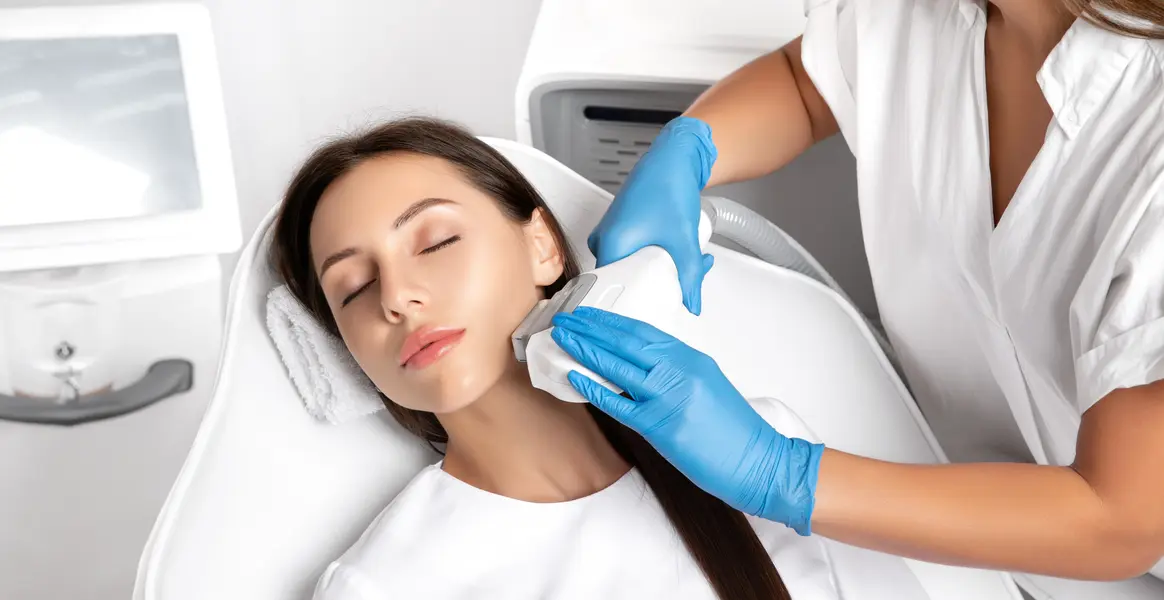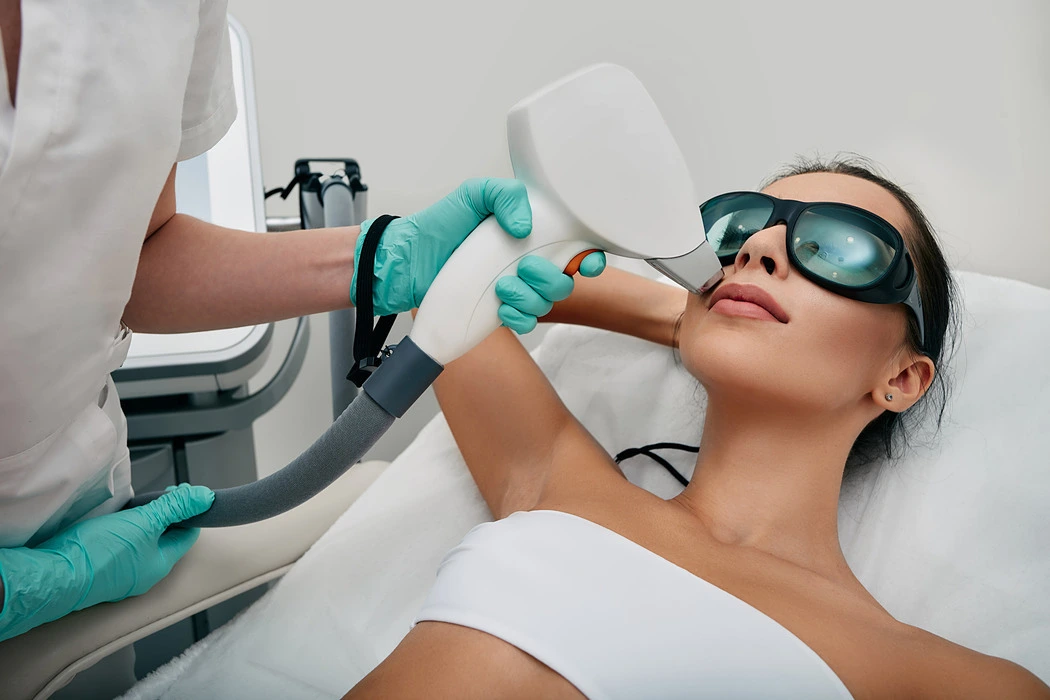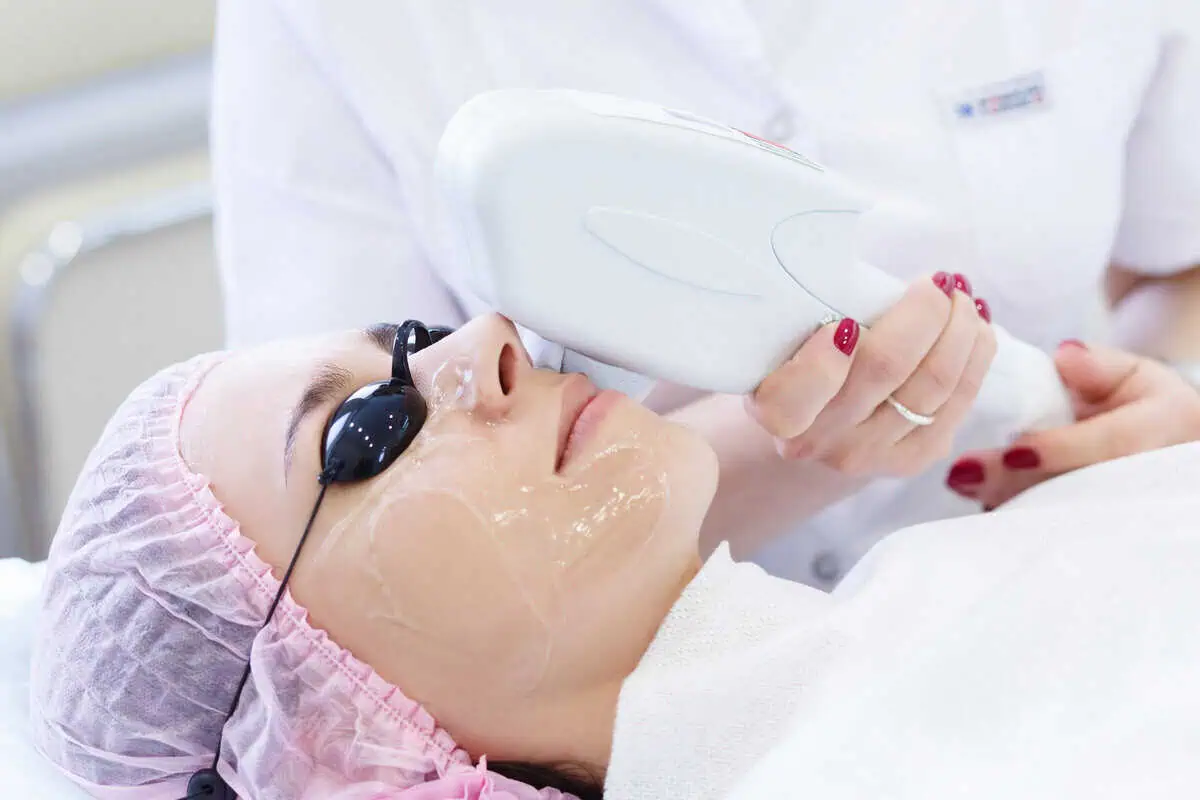If you’re considering a chemical peel, you’re likely looking for a way to refresh your skin, improve texture, and address concerns like chemical peels for fine lines and wrinkles, acne scars, or hyperpigmentation. Chemical peels for skin rejuvenation have been a go-to treatment in dermatology for years, offering a solution for those who want smoother, more radiant skin.
Before booking your first appointment, understanding how these treatments work, the different types available, and proper aftercare ensures your skin heals beautifully and enhances the results to achieve the best results.
What Are Chemical Peels?
A chemical peel is a professional skincare treatment that involves applying a chemical solution to gently dissolve dead skin cells and shed the outermost layer, encouraging fresh, healthy skin regeneration. This process encourages the regeneration of new skin, revealing a fresher, more youthful complexion. Chemical peels for dark spots help improve skin texture, even out tone and reduce visible signs of aging and sun damage. While the face is the most common treatment area, chemical peels can also be used on the neck, hands, and other areas needing skin rejuvenation.
Types of Chemical Peels
Not all chemical peels are the same. They vary in strength and depth, depending on your skin concerns and goals. Here’s a breakdown of the three main types:
1. Superficial (Light) Peels
Superficial peels use mild acids like alpha-hydroxy acids (AHAs) or beta-hydroxy acids (BHAs) to exfoliate only the outermost layer of skin. These are great for improving minor discoloration, refining skin texture, and reducing mild acne. Since they require little to no downtime, they are an excellent option for those looking for a quick refresh without interrupting their routine.
2. Medium Peels
Medium peels penetrate deeper into the skin using trichloroacetic acid (TCA) or stronger glycolic acid solutions. They target age spots, moderate wrinkles, and chemical peels for acne scars. Expect a few days of peeling and redness, with full recovery taking about a week.
3. Deep Peels
For those with severe wrinkles, deep scars, or extensive sun damage, deep peels using strong acids like phenol penetrate the lower layers of the skin. These deliver dramatic results but require a longer recovery period. Since they involve significant exfoliation, they are typically performed under medical supervision.
Benefits of Chemical Peels
A chemical peel treatment benefits your skin by:
- Enhancing Skin Texture and Tone: By exfoliating away old skin cells and stimulating faster cell turnover, peels leave your skin smoother and more even.
- Reducing Fine Lines and Wrinkles: Encouraging collagen renewal reduces the visibility of fine lines and wrinkles.
- Treating Acne and Scars: Some peels help control acne breakouts while reducing post-inflammatory pigmentation from previous breakouts.
- Correcting Hyperpigmentation: Sun damage, melasma, and dark spots can fade with the right peel, leading to a more balanced complexion.
- Minimizing Pore Appearance: By unclogging pores and removing impurities, chemical peels can create the illusion of smaller pores over time.
Potential Risks and Side Effects
While chemical peels offer impressive results, they come with potential risks, especially if post-treatment care isn’t followed properly. Possible side effects include:
- Redness and Swelling: Some level of redness and swelling is expected, especially with medium and deep peels.
- Scarring: Though rare, improper aftercare or picking at peeling skin can lead to scars.
- Infections: The treated skin is temporarily more vulnerable to bacterial, viral, or fungal infections.
- Changes in Skin Color: Those with darker skin tones may experience hyperpigmentation or hypopigmentation, especially with stronger peels.
- Increased Sensitivity: Newly exposed skin is more sensitive to sunlight and environmental stressors.
Preparing for Your First Chemical Peel
For optimal outcomes and reduced risks, proper preparation is key. Here’s what to do before your appointment:
- Book a Consultation: Your provider will assess your skin type and concerns to determine which type of peel is best for you.
- Follow a Pre-Treatment Routine: Depending on your skin, your provider may recommend using retinoids, hydroquinone, or gentle exfoliants beforehand to enhance results.
- Protect Your Skin from the Sun: Limit exposure to the sun and apply a broad-spectrum sunscreen daily to reduce the risk of post-peel pigmentation issues.
- Pause Certain Medications and Products: Some skincare ingredients, like retinoids and exfoliants, should be stopped a few days before your peel.
- Keep Your Skin Hydrated: Well-hydrated skin heals better and experiences less irritation post-treatment.
What to Expect During the Procedure
Knowing what happens during a chemical peel can ease any concerns:
- Cleansing: Your provider will cleanse your skin to remove dirt, oil, and makeup.
- Application of the Chemical Solution: The chosen peel solution is applied evenly to your skin. A mild tingling or warm sensation is common.
- Neutralization: Some peels require a neutralizing agent, while others naturally self-neutralize over time.
- Post-Treatment Care: Your provider will give you aftercare instructions to ensure proper healing.
Recovery and Aftercare
Taking care of your skin after a chemical peel is just as important as the treatment itself. Follow these guidelines for the best results:
- Hydrate Your Skin: Keeping your skin moisturized promotes faster healing and minimizes discomfort.
- Avoid Sun Exposure: Use SPF 30 or higher daily, and avoid prolonged sun exposure to prevent hyperpigmentation.
- Do Not Pick or Peel the Skin: Let the skin shed naturally to avoid scars or irritation.
- Stick to Gentle Skincare Products: Avoid harsh exfoliants, acids, and active ingredients until your skin has fully healed.
- Attend Follow-Up Appointments: If recommended, check in with your provider to track your progress and discuss future treatments.
Who’s a Good Candidate?
Not everyone is an ideal candidate for a chemical peel. Here’s what makes someone a good fit for this treatment:
- Mild to Moderate Skin Concerns: Ideal candidates include those dealing with fine lines, uneven skin tone, acne scars, and sun damage.
- Healthy Skin Barrier: If you have eczema, rosacea, or an active skin infection, a chemical peel might not be the best option.
- Skin Type Considerations: While peels can be customized, deeper treatments carry a higher risk of pigmentation changes in darker skin tones.
- Realistic Expectations: Those who understand that results can take multiple sessions will be more satisfied with the process.
- No Recent Skin Treatments: If you’ve recently had laser treatments, waxing, or other aggressive skin procedures, it’s best to wait before undergoing a peel.
Takeaway
A chemical peel can be a game-changer for your skin, helping you achieve a smoother, brighter, and more even complexion. With the right treatment plan and aftercare, you can experience long-lasting improvements in skin tone, texture, and clarity. Whether you’re looking to refresh your look or address specific skin concerns, a personalized approach will deliver the best results.
At New Beauty Medical Aesthetics, we specialize in customized Chemical Peels Treatment in McMurray PA tailored to your skin’s unique needs. Our expert team is here to guide you through every step, ensuring a safe and effective experience. Say Goodbye to Dull Skin – Book Now and take the first step toward glowing, rejuvenated skin!






